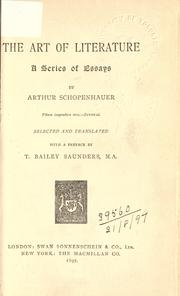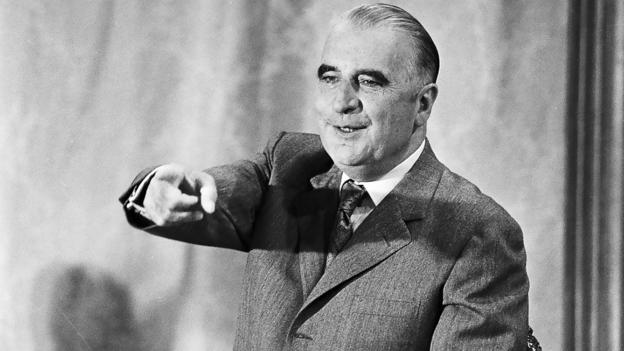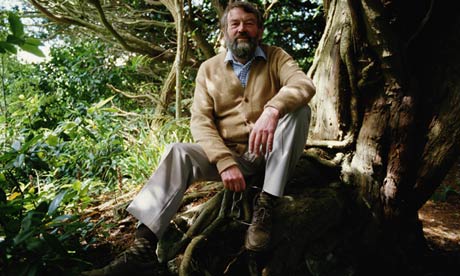昨天梁先生提醒叔本華引言的上下文.
我1979-80在竹北廠TEO 怎麼不認識你?
與江老師通信2封. 與Ken Su談他.
blogging
土石流で列車脱線、12人けが…台湾南部 読売新聞
台湾交通部(交通省)によると乗客12人が重軽傷を負った。 列車は約250人 ... 日本の対台湾窓口機関・交流協会台北事務所によると、日本人が負傷したとの情報はない。
基隆土石流.....
晚上至8點
Political intrigue and deception unfold inside the United Nations, where
a US Secret Service agent is assigned to investigate an interpreter who
overhears an assassination plot.
晚餐票近750萬元/張
Katharine Graham《個人歷史 Personal History 》/《華盛頓郵報》新史...
人物她賣掉了四代相傳的《華盛頓郵報》SHERYL GAY STOLBERG 2013年08月31日
[image: 凱瑟琳·韋茅斯,《華盛頓郵報》第四代出版人。]
Matt Roth for The New York Times
凱瑟琳·韋茅斯,《華盛頓郵報》第四代出版人。
-
-
-
-
華盛頓——在華盛頓城一年一度的媒體、政界、好萊塢眾星雲 集的盛典——2012白宮記者晚宴舉辦前夜,凱瑟琳·韋茅斯 (Katharine
Weymouth)也舉辦了她自己的華盛頓名流晚宴。當年,她的外祖母、《華盛頓郵報》先驅出版人凱·格雷厄姆(Katharine
Graham)曾多次舉辦這類晚宴,也因此聞名。
在韋茅斯寬敞通透、精雕細琢的宅邸里,凱·格雷厄姆的摯友 與後人圍坐在晚宴餐桌前,他們中有前總統克林頓的顧問弗農·喬丹(Vernon
Jordan),老布殊在任期間的白宮顧問C·博伊登·格雷(C. Boyden
Gray),凱·格雷厄姆的長子、時任華盛頓郵報公司首席執行官唐納德(Donald),凱的女兒、凱瑟琳·韋茅斯的母親拉里·韋茅斯(Lally
Weymouth),她也是一位踏遍全球的記者、曼哈頓的社交名媛,因採訪數位...
更多 »
OPINION | Op-Ed Contributor Why India's Economy Is Stumbling By ARVIND
SUBRAMANIAN
India's problems have deep and stubborn origins of the country's own
making.
8月要結束 該整理一下印度最寒冷的夏季:經濟危機
待補
《經濟危機 催化改革》彭博商業周刊 / 中文版
印度總理辛格(Manmohan
Singh)年逾80歲,對他來說,2013年夏天的沮喪是那樣似曾相識。1991年6月,辛格剛擔任印度財政部長,便迎來印度獨立以來最嚴重的經濟危機。該國外匯儲備驟減,僅相當於數周進口額,黃金儲備也被空運到倫敦,作為獲取國際貨幣基金組織(IMF)貸款的抵押品。
不論是全民樂觀情緒,還是辛格的良好聲譽,目前都面臨空前考驗。印度經濟增長率已跌至十年低點,儘管央行加息令投資受到抑制,通脤率仍居高不下。國家財政赤字與經常帳赤字也告危。近幾周,印度盧比崩跌,自年初以來,兌美元貶值超17%,是今年亞洲表現最差的貨幣。
外界普遍認為印度正面臨1991年以來最嚴重的危機。不過,雖然目前形勢看似一片慘淡,未來的印度也大有可能擺脫困境並變得更強大。事實上,我們可以說,眼下的掙扎或許正是印度振興經濟所需的...
更多 »
愛迪達成功之道:看穿顧客在想什麼http://www.cw.com.tw/article/article.action?id=5051794
2013-08-30 Web only 作者:經濟學人
[image: 愛迪達成功之道:看穿顧客在想什麼] 圖片來源:陳德信10年前,運動服飾製造商不停地為產品增加功能和未來主義設計,它們相信,消費者會依照技術規格來購買訓練鞋。但是,愛迪達
(adidas)現任運動服飾創意總監卡恩斯(James Carnes),在2004年奧斯陸會議中碰上了丹麥的顧問拉斯繆森(Mikkel
Rasmussen);拉斯繆森挑戰了這個看法,他說,一支手機可能有72個功能,但那比大部分人想要、或是會用的功能多了50個。
那讓卡恩斯非常好奇,也讓他決定與拉斯繆森的小顧問公司ReD展開長達10年的合作。在那10年之中,愛迪達的銷售和股價皆穩定成
長。全球龍頭耐吉(Nike)的行銷是以運動明星代言為主;彪馬(Puma)的行銷佔營收比例更高,並跨足非運動休閒服飾領域,銷售亦有所成長,但仍遠遠
落後主要對手耐吉和愛迪達。愛迪達的行銷較為低調,預算佔營收比例也比前兩間公司低,雖有三分之一的銷售出自「生活類」產品,不過運動服飾仍舊是愛迪達的
核心業務。
愛迪達必須從基本面著手,才能在這個毛利微薄的領域中成功,例如,愛迪達得遵循競爭對手的做法,將生產外包以...
更多 »
At the head of the table sat Ms. Weymouth, a
Harvard- and Stanford-educated lawyer, single mother of three and, at
47, a fourth-generation publisher of The Post. As her guests chatted,
she gently intervened, steering the conversation, salon-style, toward
the economy and presidential politics. When it was over, Mrs. Weymouth,
not an easy one to please, showered her daughter with praise.
“It was a big moment,” said
Molly Elkin, Ms. Weymouth’s best friend and one of the dinner party
guests. “It was sort of like: ‘I’ve passed the baton, kid. You’ve
learned well, you did a good job.’ ”
It was the kind of scene,
rife with unspoken family drama, that captivates longtime
Washingtonians, who have scrutinized and mythologized the Grahams for
decades, much as the British do their royalty. Now, in an exceedingly
difficult climate for newspapers, Ms. Weymouth is charged with saving
the crown jewels. In a city and a clan filled with expectations for her,
that is no easy task.
She is carving her path in a
capital, and an industry, vastly changed from the one her grandmother
inhabited when big-city newspapers were flush with advertising; The Post
helped bring down a president; and for nearly four decades, Mrs. Graham
ruled social Washington, feting presidents and prime ministers in her
elegant Georgetown manse, dining at the White House with kings and
queens.
“There is never going to be
another Kay, never in Washington, because the times are different,”
said Sally Quinn, the columnist and the wife of Ben Bradlee, the editor
whose partnership with Mrs. Graham was chronicled in “All The
President’s Men.” “People just don’t entertain that way,” Ms. Quinn
said. “People have kids, they work late. That is not what Katharine
wants to do.”
Ms. Weymouth is many
things: a working mother and enthusiastic cook; a fearless skier (“She
has not met a slope she won’t take,” says Liz Spayd, a former managing
editor of The Post); a fitness buff (“She can crunch till the cows come
home,” said Pari Bradlee, a yoga instructor and daughter-in-law to Ben)
and, for a while, one of the most sought-after dates in town. (After
seeing a local architect, Ms. Weymouth has recently reunited with an old
flame, Marty Moe, a former AOL executive.)
She does not take her
famous name too seriously, and she likes to have fun. For years, she and
Ms. Elkin, a labor lawyer, held a backyard Summer White Party, a spoof
on the lavish Black and White Ball hosted in 1966 by Truman Capote to
honor Mrs. Graham. Once, at a club in Aspen, Colo., Ms. Weymouth spied
Yankees third baseman Alex Rodriguez watching her dance.
“We are the only people in
this club who don’t want anything from you,” she announced. “Come dance
with us.” He said he would rather watch.
To her 2012 “grown-up”
dinner, she wore a $35 scoop-neck sleeveless sundress from J. C. Penney,
a playful nod to an important Post advertiser whose chief executive at
the time, Ron Johnson, was a guest. (She bought J. C. Penney dresses for
Ms. Elkin, who wore hers, and Mrs. Weymouth, who wouldn’t be caught
dead in one.)
Ms. Weymouth’s penchant for
showing off her athletic figure — she arrived for a photo shoot in a
crisp white sleeveless sheath and four-inch lime green Jimmy Choos —
provokes titters in the newsroom. Then again, she works hard for it; Ms.
Elkin said the two spend Sunday mornings doing free weights and “boy
push-ups” with a personal trainer.
“We smack-talk each other the entire time,” Ms. Elkin said, “just like we did when we were 20 years old.”
Quick-witted and
no-nonsense, Ms. Weymouth is more like her steely grandmother than her
famously demanding and mercurial mother. But since becoming publisher in
February 2008, she has had a rocky ride; she has already hired her
second editor, and critics lament that she is presiding over a newspaper
in retreat.
Ad revenue is declining and
average daily circulation was 474,767 in March, down from 673,180 when
Ms. Weymouth took over, the Alliance for Audited Media said.
Lacking the magic bullet,
she is emphasizing a local mission — she has reduced staff, shut bureaus
in New York, Los Angeles and Chicago and eliminated the well-regarded
Book World section on Sunday — to meet demands by her uncle, and The
Post board, that the newspaper turn a profit. (It is, she said,
although on Friday the parent company
reported a 14 percent drop in second-quarter earnings, compared to a year ago.)
Recently, she upset
sentimentalists by putting The Post’s 15th Street headquarters up for
sale. She says her grandmother always hated the boxy building.
But while Mrs. Graham, who
took over the company in 1963 after her husband’s suicide (and later
became publisher and chief executive), battled lifelong insecurities as
she transformed herself from a 1950s housewife to the first woman to run
a Fortune 500 company (as well as the author of
a Pulitzer Prize-winning memoir), not so Ms. Weymouth.
“Katharine is far more
comfortable in her own skin than Kay ever was,” said Robert G. Kaiser, a
Post associate editor who has worked there for 50 years. Still, he
said: “She has a burden. Your biggest anxiety, as I know from personal
experience with Kay and Don, is: ‘Am I going to screw this up? Am I the
one who is going to be remembered as the goof-off who couldn’t keep it
together?’ ”
On a steamy summer Friday
in July, Ms. Weymouth was curled up on her living room couch, not in
fashionable Georgetown but in the practically suburban northwest
Washington neighborhood of Chevy Chase, where a Post honor box and fleet
of scooters are parked on her front porch. Her golden retriever,
Dakota, scampered about, a slobbery tennis ball in its mouth.
If her social life is
centered anywhere, it is here, in the house she shares with her children
Madeleine, 13, Beckett, 11, and Bridget, 9; an assemblage of pets
(three dogs, a guinea pig, a rabbit, two gerbils and a hamster); and a
grandmotherly housekeeper, Olinda, whom she “sort of inherited” from
Mrs. Graham. It is the scene of countless family dinners with her tight
circle of friends, including Ms. Elkin, whom she met at Oxford.
Ms. Weymouth is proud of
her culinary skills, another break from family tradition. “My mother
doesn’t cook, my grandmother didn’t cook,” she said. “Her kids were
raised by servants. They would joke about Sunday night dinner. It was
the only night she would cook, and apparently it was just horrendous,
like scrambled eggs and Campbell’s soup.”
On this afternoon, she had
left work early to prepare yellow gazpacho, swordfish kebabs with bacon
and cherry tomatoes, and strawberry shortcake for 10 friends and
colleagues, including the Post foreign editor, who had returned from
Afghanistan. Her daughter Bridget wandered in nibbling a piece of bacon.
Ms. Weymouth frowned (“I
need that for dinner!” she said), but it was a mock frown, a precious
moment of normalcy. In April 2011, when Bridget was just shy of her
seventh birthday, she fell off a pony, mangling her left arm. She spent
28 days undergoing a dozen operations at Children’s Hospital here (and
later two more in New York). Ms. Weymouth moved in, conducting business
meetings from the child’s bedside.
“She was dealing with
doctors and surgeons and a child who was in a lot of pain,” said Kevin
Sullivan, a Post reporter and close friend. “But it wasn’t like she
flushed her BlackBerry down the toilet. It’s not one of those jobs where
you can say, ‘I’ll be gone a couple of weeks.’ ”
Moving to Washington to
join the family business, Ms. Weymouth said, was never in her “grand
plan.” Dowdy D.C. seems a world away from her childhood in Manhattan,
where she attended the all-girls Brearley School and danced the
“Nutcracker” while studying, quite seriously, with the School of
American Ballet.
Her father, Yann Weymouth, a
noted architect (and brother of bassist Tina Weymouth, a founder of the
Talking Heads) and mother divorced when Ms. Weymouth and her younger
sister Pamela were little. The girls were raised in their mother’s orbit
on the Upper East Side, in the swirl of New York’s literary circles.
It was a childhood spent
going out to restaurants (“Grandma disapproved,” Ms. Weymouth said) and
drinking Cokes at Elaine’s. They tagged along on Lally’s reporting trips
— “We got to have dinner at the Club d’Alep and meet some of the Syrian
aristocracy” — discussed fashion with the Vogue editor Diana Vreeland
and politics with Alexander Cockburn, the left-wing British journalist
and, for a time, Mrs. Weymouth’s live-in boyfriend.
“It was rarefied,” said
Diane Paulus, the Broadway director (“Hair,” “Pippin”), a close friend
since the third grade. “We were like 8- or 9- or 10-years-old, and there
were big grown-up dinner parties and each child would give toasts.
Lally was very social, very fashionable, very chic and very vocal in her
politics. There were always political discussions, and she expected the
children to keep up.”
But at Harvard, and later
Oxford, where the future publisher briefly pursued a master’s degree in
literature — “My mother told me I had to go to graduate school,” Ms.
Weymouth explained — and Stanford Law, she rarely let on who she was.
At Oxford, she drank beer,
rowed crew and went through a black leather phase — “She scared me, she
was so cool,” Ms. Elkin said — which turned almost comical on a trip to
Israel. During a stopover in Paris to see Mr. Weymouth, who was helping
I. M. Pei design the glass pyramid at the Louvre, Ms. Weymouth produced a
lengthy itinerary, drafted by her mother, including lunch at the
Knesset with Benjamin Netanyahu and dinner at the apartment of Yitzhak
and Leah Rabin.
“So the security people are
looking at her, with her black eyeliner and her leather jacket and
these black earrings, and they’re like, ‘Who are you?’ ” Ms. Elkin said.
“And I’m looking at her and saying: ‘Yeah, who are you? And why did you
only tell me to bring one dress?’ ”
Ms. Weymouth loved the West
Coast and hoped to stay there after law school. Her mother had other
ideas. “I thought it was a nice place for a weekend,” Mrs. Weymouth said
in an interview, “not for a life.”
Instead, she took a job as a
litigator with Williams & Connolly, The Post’s law firm. Nicole
Chapman, her Harvard roommate, said she wanted to “establish herself as
Katharine Weymouth,” and eventually have children, becoming a “more
there mother” than her own had been.
To herald the arrival of
her oldest grandchild, Mrs. Graham invited Washington’s young
up-and-comers to a dinner party. George Stephanopoulos, then with the
Clinton administration, was there. Mr. Jordan sent his niece, Carolyn
Niles, now a close Weymouth friend. “She really took the time to
establish social connections for Katharine,” Ms. Niles said.
If Kay Graham saw her
namesake as her heir apparent, she did not say, though it was apparent
they were extremely close. Ann Calfas, a Stanford classmate of Ms.
Weymouth, recalls the grandmother’s simple delight in driving them to
the wedding of a friend. “She was like, ‘Girls, hop in!’ ”
Ms. Weymouth has her own
fond memories of Friday night “dates” when Mrs. Graham needed a party
escort, and of quiet dinners in the library of the big house on R Street
in Georgetown. “We would eat on the TV trays and gossip,” she said,
“and I would tell her about my love life and she’d crack up.”
In 1996, The Post put out a
call to Williams & Connolly for temporary legal help. Ms. Weymouth
put her hand up, and the job became permanent, leading to stints in the
online operation (then a distinct subsidiary) and ultimately as vice
president for advertising.
Inside the newsroom, one
rap on Ms. Weymouth is that unlike her uncle, she has never been a
reporter. Over the years, she said, they talked about it, but she didn’t
feel qualified. “I just felt like it would be too weird,” she said.
If there is one decision
Ms. Weymouth has made that has mystified people who know her well, it
was her July 1998 marriage to Richard Scully, a Washington lawyer. The
wedding at her mother’s Southampton home, with 470 A-list guests, was a
typical Lally extravaganza. Not only did Oscar de la Renta design the
dress, a friend said, he was there to zip it up.
The divorce in 2005 was
messy. Court records show they fought over their $70,000 country club
membership (Mr. Scully, a golfer, testified that Ms. Weymouth “doesn’t
really value it”) and their German shepherd, Maxine, among other things.
The court awarded both to Ms. Weymouth.
Last year, Mr. Scully was
accused of assaulting his girlfriend. The charges were dropped, but Ms.
Weymouth went back to court, asserting that he had stalked her through
texts and e-mail and engaged in “angry and explosive outbursts” in front
of their children. Mr. Scully’s lawyer, Mark E. Schamel, called the
allegations “false” and attributed Ms. Weymouth’s assertions to an
“opportunistic pleading” filed by her divorce lawyer.
Ms. Weymouth and her tight-knit circle prefer not to discuss it. “The less you say about him, the better,” Lally Weymouth said.
Friends say Ms. Weymouth
has become the ultimate hands-on mother (albeit one with
“one-and-a-half” nannies, as she describes it), waking up early to make
the children a hot breakfast and driving them to school every morning.
In a city of nightly parties, she picks and chooses. She is a regular at
galas for the Alvin Ailey dance company and the PEN/Faulkner
Foundation, because Ms. Elkin is on the board.
But at this year’s White
House Correspondents’ Dinner, Ms. Weymouth was nowhere to be seen. She
was home hosting a sleepover; it was Bridget’s ninth birthday.
Not long after her
grandmother died in 2001, Ms. Weymouth had a dream. In it, they strolled
the beach on Martha’s Vineyard, where Mrs. Graham owned a home.
“In my dream, I knew she was dead,” Ms. Weymouth said. “But she said: ‘I’m sorry. I’m sorry I have to leave you.’ ”
Ms. Weymouth sees no larger
meaning in this — “I don’t believe in hoo-ha,” she said — though as she
charts the future of her family’s business, she is also immersed in the
past. Pictures of her grandmother line the walls of her office, where
Mrs. Graham’s memoir, tagged with sticky notes for Ms. Weymouth’s
speeches, is on a shelf. For her first day on the job in February 2008,
she wore Mrs. Graham’s pearls “for good luck.”
Her ascension generated the
predictable buzz in Washington. People speculated about whether there
was competition between Ms. Weymouth and her mother, who, the theory
goes, remains miffed that her kid brother inherited the throne. (Not
true, both women say.)
Ms. Weymouth took the helm
just as the bottom was about to fall out of the economy. The newspaper
had already gone through several newsroom buyouts, and she told her
uncle she would not take the job unless she could integrate the digital
and print operations. “Don was hellbent against it, and probably still
is,” she said.
Deciding a new editor was
needed, she picked Marcus Brauchli, from The Wall Street Journal, the
first outsider to edit The Post in four decades. Magazines gushed that
she had found her Ben Bradlee, but the relationship soured after news
broke that they planned to offer lobbyists the chance to underwrite
“intimate and exclusive” dinners, for up to $250,000, with Obama
officials and Post journalists in Ms. Weymouth’s home, a seemingly crass
version of Kay Graham’s salons.
Within the Graham family,
there is great sensitivity to any suggestion of nepotism. Don Graham,
68, praises his niece as “passionate, hardworking, utterly decent” and
also qualified. As to whether she will inherit his job, he ducks the
question: “I’m not expecting her to go anyplace.”
One hint, Post tea-leaf
readers say, can be found in the company garage. For years Kay Graham
drove a car with the low-numbered District license plate No. 149, which
once belonged to her father, Eugene Meyer, who bought The Post at a
bankruptcy sale in 1933. Now it is on Ms. Weymouth’s 1991 BMW
convertible.
In the meantime, things have been looking up. In January,
Ms. Weymouth replaced Mr. Brauchli with Martin Baron,
a no-nonsense newsman from The Boston Globe (and, previously, The New
York Times), who has won praise for sharpening coverage and boosting
morale. Reporters at The Post who routinely question whether their
publisher “gets what we do,” now wonder if maybe, just maybe, she has
found her Ben Bradlee after all.
“She made a brilliant choice,” Ms. Quinn said, “and it’s working.”
Not everyone is so
effusive. The Post recently began charging for online access, but the
climate for newspapers in general, and The Post in particular, remains
tough. Mr. Baron called Ms. Weymouth “a realist,” who “still wants us to
do really great journalism,” albeit “within the reality of our economic
circumstances.” But he could not rule out further cuts.
The question, inside and
outside the newspaper, is whether Ms. Weymouth can ever be the great and
beloved publisher her grandmother was. “Certainly the genes are there,”
said John Morton, a newspaper industry analyst. “It’s the judgment that
has yet to be proved.”
Others seem to have written her off. The Guardian columnist Michael Wolff
recently criticized Ms. Weymouth, declaring her “a disaster in a job for which she had, other than her lineage, no qualifications.”
Ms. Weymouth, mindful of
her past yet unsentimental about it, seems unconcerned. Her mother
“tells me she is proud of me,” she said, and “if I’m not doing a good
job, as much as Don loves me, he will fire me.” Even her grandmother,
she said, grew into greatness, making mistakes along the way.
“I don’t feel like my job
is to be beloved,” said Ms. Weymouth, the woman who might be known as
the working-mother publisher, with her children at play and her dogs at
her feet. “I certainly hope to be a great publisher, and if people want
to love me, too, that’s even better.”




























